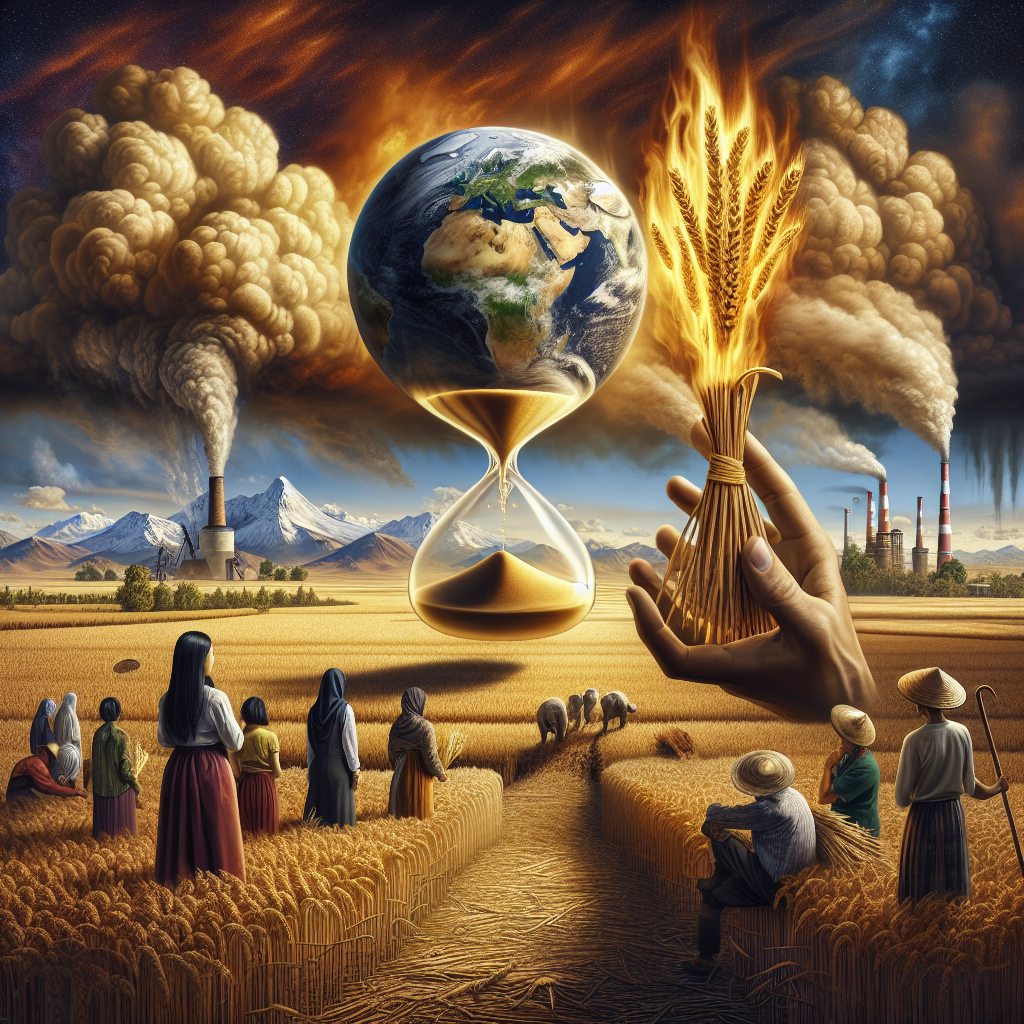
Climate Change and Its Dire Effects on Global Food Security
Climate change is wreaking havoc on our planet, and its impact is deeply felt in global food security. Farmers and communities worldwide face challenges they never anticipated. With rising temperatures and unpredictable weather patterns, the stability of food systems is at risk.
Contents
What is the Link Between Climate Change and Food Security?
How does climate change affect crop yields?
Rising temperatures can reduce crop yields. A slight increase in average temperatures can stress plants, causing them to wilt and die. Many crops can’t withstand extreme heat, resulting in poor harvests.
Moreover, unpredictable rainfall patterns lead to either droughts or floods. Both scenarios are harmful to agriculture. Droughts dry up essential water resources, while floods devastate crops and soil.
How does climate change impact livestock?
Livestock suffer from heat stress too. With warmer temperatures, animals may experience reduced fertility and lower milk production. Moreover, climate change affects the availability of fodder and water for livestock.
Diseases also become a concern. Warmer climates can lead to the spread of pests and diseases previously controlled by cooler temperatures.
Dire Effects of Climate Change
How does climate variability affect fishing communities?
Oceans absorb much of the earth’s heat, leading to warmer waters. This affects fish migration patterns and breeding grounds. Fishermen find it tougher to catch the fish they once relied on. Increasing sea levels and acidification also threaten delicate marine ecosystems.
The socio-economic impact of food insecurity
Food insecurity prompts socio-economic challenges. When staple crops fail, food prices skyrocket, leading to hunger in vulnerable communities. Families may be forced to migrate in search of sustenance, increasing the strain on already scarce resources in other regions.
Societal unrest often follows food shortages. Populations lacking access to adequate nutrition are more prone to diseases, reducing productivity and overall economic growth. With increasing pressure on governmental systems, the resilience of social structures can erode.
Table: Effects of Climate Change on Global Food Security
| Impact | Description |
|---|---|
| Crop Yields | Reduced due to heat stress; droughts and floods affect stability. |
| Livestock Production | Heat stress and diseases reduce fertility and milk yield; affects fodder. |
| Marine Ecosystems | Warmer waters affect fish migration; acidification and sea-level rise. |
| Food Prices | Increase due to reduced supply; affects accessibility for vulnerable groups. |
| Societal Unrest | Scarcity leads to conflict, migration, and increased health issues. |
For more insights, check out this detailed post: Climate Change’s Impact on Food Supply.
Strategies to Mitigate the Risks
What can communities do to adapt to changing conditions?
Diversify Crops: Grow a variety of crop species to buffer against uncertain weather.
Invest in Technology: Use climate-resistant seeds and advanced irrigation methods to optimize water usage.
Community Education: Provide training on sustainable farming practices, helping communities adapt to the changing climate.
Role of Governments and Organizations
Governments can introduce policies that promote sustainable farming. Investments in research to develop climate-resilient crops are crucial.
Organizations can provide funds and resources for communities to adapt infrastructure. Promoting international cooperation in tackling climate issues helps pool resources for shared solutions.
Innovative Solutions for Future Security
Are technological advances enough to tackle food insecurity?
Genetic Engineering: Develop crops with enhanced resistance to heat and pests.
Precision Agriculture: Use data analytics and AI to monitor crop health and optimize resources.
However, technology isn’t the only answer. It’s essential to combine tech solutions with traditional practices for realistic outcomes.
Sustainable Practices and Local Solutions
Encourage local food systems that reduce dependency on global supply chains. Supporting local farmers strengthens community resilience against climate-induced challenges.
Implementing permaculture and agroforestry practices can restore soil health and biodiversity. These techniques provide natural ways to combat climate-related threats.
In-depth Questions About Climate Change and Food Security
Will reducing carbon emissions stabilize global food security?
Reducing carbon emissions is a step toward stabilizing the climate. However, immediate effects on food security might not be evident.
Carbon reduction slows down climate change but doesn’t reverse existing damage. It’s vital to pair emission reductions with adaptation strategies in agriculture. These include enhancing infrastructure, and community education on sustainable practices.
Furthermore, international collaboration is essential. By working together, countries can support global food systems. This ensures all regions have access to necessary resources and technologies.
How do socio-economic factors influence food security in the face of climate change?
Socio-economic factors play a significant role in food security. Poorer regions are often more vulnerable to climate impacts. They lack resources for adaptation and resilience.
Economic inequality affects access to essential agricultural technologies. Governments in wealthier nations might provide more robust support systems.
Addressing socio-economic disparities is crucial for equitable food security. Ensuring affordable access to technology and resources can help bridge the gap. Educational initiatives about sustainable practices can empower vulnerable communities.
Are there examples of successful adaptation strategies to combat climate-induced food insecurity?
Several regions have successfully implemented adaptation strategies. For instance, communities in India have embraced rainwater harvesting techniques. This ensures water availability even in drought conditions.
In Africa, many farmers have shifted to drought-resistant crop varieties. This change helps stabilize yields despite erratic weather.
Additionally, some countries are investing in greenhouse agriculture. This method offers controlled environments to grow crops despite outside conditions. Sharing these successful practices globally can inspire similar adaptations in other areas.
Conclusion
Climate change and its direct impact on food security require our urgent attention. From changing crop yields to affecting marine ecosystems, its reach is profound. But with innovative solutions and collective action, we can work towards a more secure food future.
For more on climate change and food security: Visit Investment Shoax.






